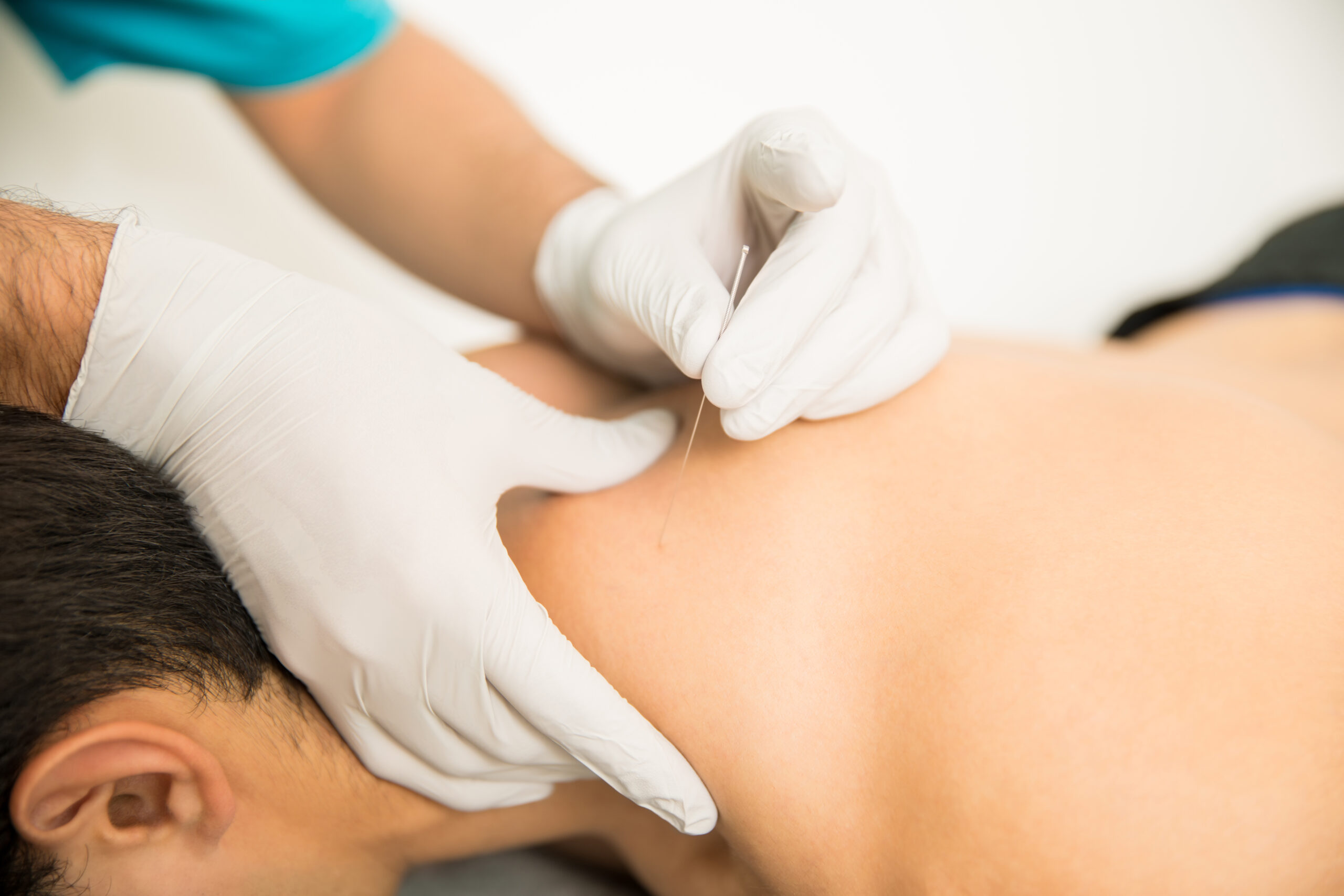What is dry needling?
Dry needling is an effective and efficient technique which involves inserting single-use, sterile needles into myofascial trigger points or along neuromuscular pathways.
This aims to create a neurophysiological effect which can modulate pain and stimulate healing, thus helping with pain and injury management.
It is most commonly used as a release technique for various trigger points (tense or tight areas of muscles), or along the neural pathway or segments of various nerves to help manage pain, relax muscles and address dysfunction.
There are different dry needling techniques and can be superficial or deep depending on the type of technique used by the therapist.
How does it differ to acupuncture?
The confusion between acupuncture and dry needling is understandable due to the use of the same single filament needles in both techniques.
Dry needling is based on western anatomy and neurophysiological theories, while Acupuncture is an ancient traditional Chinese practice that involves redirecting the flow of ‘qi’ or ‘chi’.
This is achieved by needling along the meridians which link to the different internal organs to address and manage a variety of musculoskeletal and non-musculoskeletal issues.
Some physiotherapist have completed advanced training in acupuncture and may offer both as treatment so don’t hesitate to ask if you have any questions.
What does dry needling treat?
Dry needling can be used to treat numerous musculoskeletal conditions. These include:
- Neck, back, shoulder, hip and arm pain
- Tennis or golfer’s elbow
- Headaches and migraines
- Tendinopathy
- Jaw pain
- Leg pain, such as hamstring strains, sciatica or calf tightness
- Osteoarthritis related symptoms
- Spinal pain
- Pelvic girdle pain
Are there any side effects?
When you present to the clinic, the health care professional or physiotherapist working with you will take a comprehensive history to identify any contraindication for you receiving dry needling as a treatment option.
In general, following dry needling, some patients may experience mild muscle soreness over the treated area and possibly into areas of referred treatment.
This typically only lasts for 1-2 days at most.
Other side-effects to watch for are specific to the region being treated and will be explained by your treating physiotherapist.
Depending on the amount of soreness, some further management may be required at home such as applying heat or ice to the area, stretching or gentle massage.
If any residual symptoms persists please contact your physiotherapist or health care professional.
In summary
Dry needling may be used along with exercise, like other modalities of treatment, as an adjunct to manage your condition.
However, do speak to your therapist for further understanding regarding the role and evidence behind the use of dry needling for your specific condition.
Lakshmi Varma is an APA Titled Musculoskeletal Physiotherapist who works at Lifecare Prahran Sports Medicine on Monday, Tuesday, Wednesday, Friday and Saturday.
The clinic is close to suburbs including Malvern, South Yarra, Toorak, Armadale, St Kilda East, Caulfield, Richmond and Hawthorn, and has early and late appointments for all your sports medicine and physiotherapy needs.

